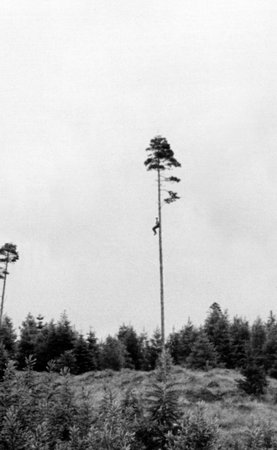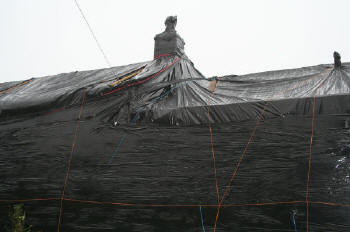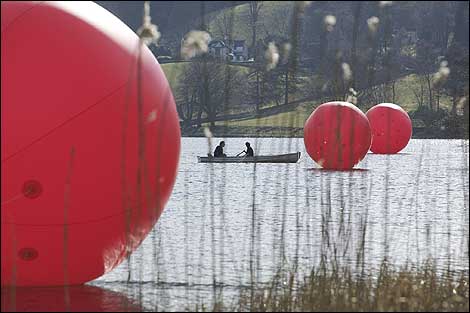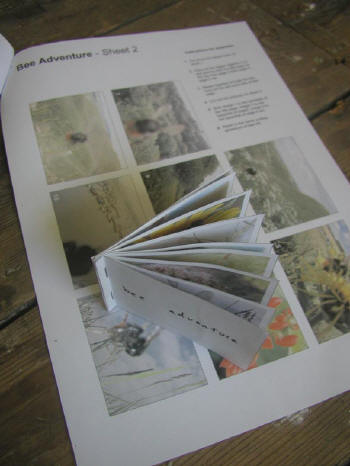|
|
| home | features | exhibitions | interviews | profiles | webprojects | gazetteer | links | archive | forum |
|
Radical Ruralism: place, landscape, and rurality in contemporary art Rupert White
These processes are linked to the economy and are inseparable from the global forces that drive both capitalism and the exploitation of the environment. In the UK, through town planning, urbanising processes occur at a physical level in ways that are clearly tangible. This includes the building of roads, out of town shopping schemes, national and multi-national supermarkets and retail and fast food outlets, much of which tends to drive out local business, drain money out of the community, and create identikit town centres. Urbanisation is also inseparable from industrialization and globalisation, both of which allow goods to be provided more cheaply. This has resulted in many rural areas losing their traditional industries and instead becoming over-reliant on tourism. The tourist economy supports seasonal and part-time work only and results in lower wages in rural areas, and problems with housing supply, with many homes bought up as holiday cottages. These physical and economic examples of urbanisation, which are recognisable by the way that distinctive and economically self-sustaining aspects of rural character are eroded, are possibly less important than cultural forms of urbanisation. These forms of urbanisation happen in an analogous manner because of the way that cultural production is centred on large cities. As a result financial capital flows from periphery to centre, and cultural capital from centre to periphery. For example, film and television companies have tended to be based in large cities, so films and TV programmes are conceived there. As a result landscapes and their rural communities appear as backdrops to costume dramas or fantasy adventures: ie as cultural products that are created for urban audiences. Music companies are also mostly based in cities and new trends made there are later passed on second hand for consumption by those who live in the countryside.
This period in British art, as noted by Julian Stallabrass1, provided the final nail in the coffin of British Landscape art. In previous decades the landscape genre had in some small way created a cultural bridge between town and country, a symbiotic relationship, with one defining the other by being its mirror image2. The closure of this bridge has threatened the viability of art originating in rural areas, largely because as the London artworld looked abroad (to other metropolitan centres) for inspiration, the discourse around art became narrow and detached from the lived experience of people in provincial and rural parts of the country. It is not surprising under the circumstances, that people living in rural areas who are alienated from much of the urban culture that they consume or partake of, turn to local expressions of community spirit, and take a special pride in the landscape that they find around them by investing culturally and emotionally in it: the view that they have from their kitchen window, or their favourite walk for example. The dimension of rural experience that is centred on the landscape is unique to rural dwellers. This point seems largely lost on urban art audiences and art-critics, many of whom remain disdainful and dismissive of landscape-derived imagery - but it partly explains the continuing popularity of ‘view-painting’ in the provinces.
The critical discourse around rural art is underdeveloped3. This, together with pressure from the tourist art market, is why, rather than explore issues that are truly important or challenging, artists who live in the countryside all too often tend to fall back on such cliché-ridden landscape painting. Rather than explore the potential of a more authentic local or rural art, there has also been a tendency for curators in rural parts of the country to mount shows that were conceived for urban audiences in a way that is similarly problematic. But now, entering the 21st century, there are signs that things are changing. Firstly new technologies, particularly the internet, allow individuals to network and share ideas in different ways. We are, in particular, no longer completely reliant on TV, newspapers and magazines and other media generated in the city.
If such art is to be thought of as a new movement, that movement might be called ‘Radical Ruralism’. Radical Ruralism might therefore be defined simply as art made in rural parts of the country with a predominantly but not exclusively rurally-based audience in mind. It is radical because it has a questioning, critical or challenging aspect to it, and it is rural because it deals with issues and ideas relevant to rural people4. Radical Ruralism is therefore art that is not merely a celebration of the picturesque qualities of the landscape or a product made to decorate the wall or mantelpiece5. As such it benefits from being supported by a critical discourse, and it deserves a considered and intellectual response. At its most radical it is likely to seek to reconnect rural people to their folk-histories, communities or places, through ritual or communal exchange, or by deeper imaginative or psycho-geographical processes. It may seek to disrupt the spectacle of the landscape, or the industry of tourism. It may carry an implicit or explicit message that is critical of urbanization and its connection with capitalism, globalization and environmental exploitation. It may even have the potential to mount a significant challenge to establishment forms of urban art practice. Until now Radical Ruralism, which arguably forms an increasingly significant genre of art practice in some parts of the country, has remained largely invisible and unnamed, and it has not had a critical context. It is hoped this essay, which was written to provoke discussion about contemporary art in rural areas, may also be part of a first stage in attempting to address this deficit.
1cf High Art Lite, Julian Stallabrass 2cf Landscape Tradition in Western Art, Michael Andrews 3Though in the UK a range of contemporary approaches to the issues have been taken (especially in Cumbria with Grizedale Arts, FRED and FOLD Gallery. see artcornwall.org interviews with Steve Messam and Adam Sutherland). 4Radical Ruralism cannot, by definition, be considered to be art that is made by rural artists who aspire to be urban artists, and therefore for reasons eg of career advancement fail to address issues more local to them. 5Much, though not all, Radical Ruralism is related to Land Art practices, especially when the artwork disrupts the spectacle of the landscape. |
|
|




